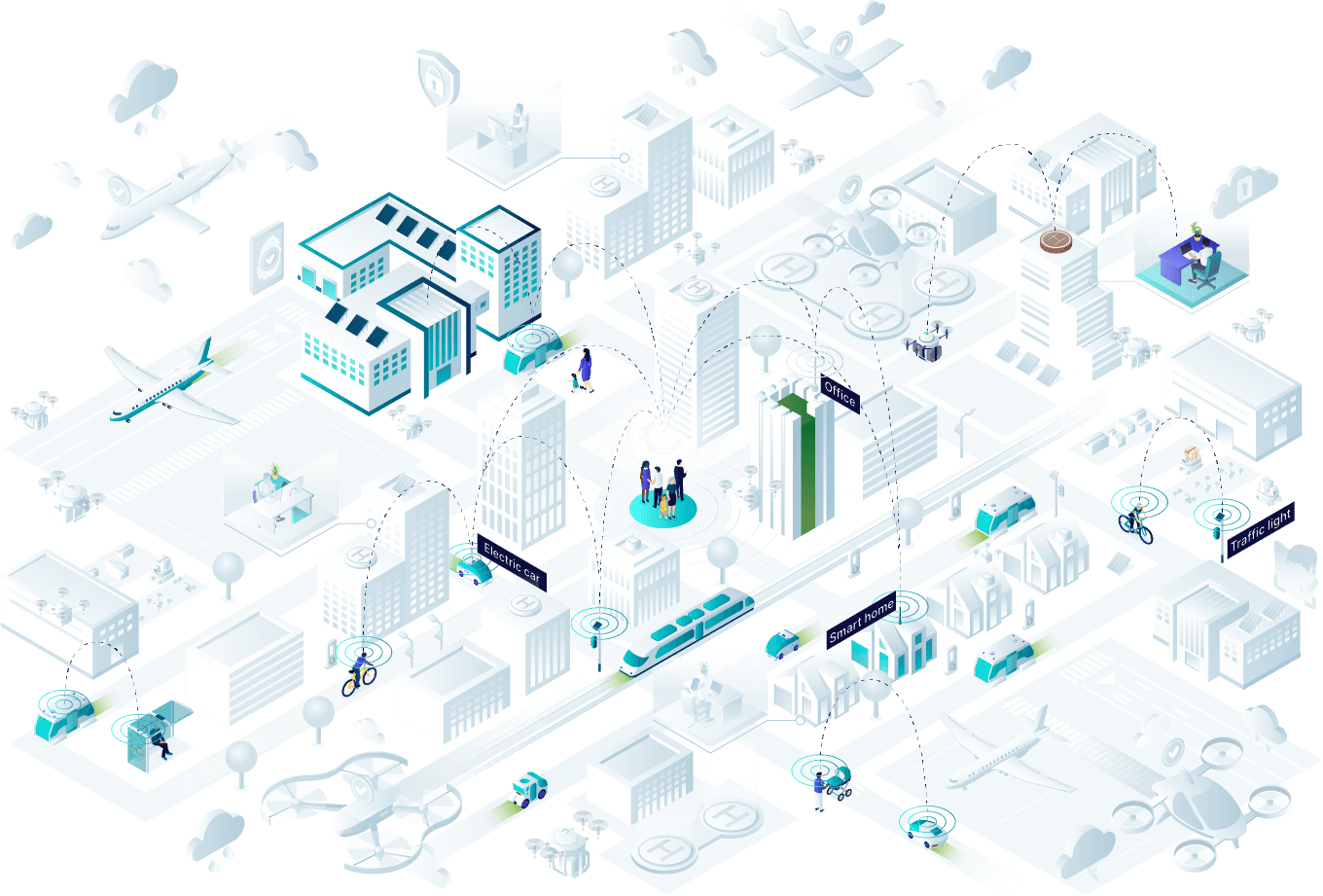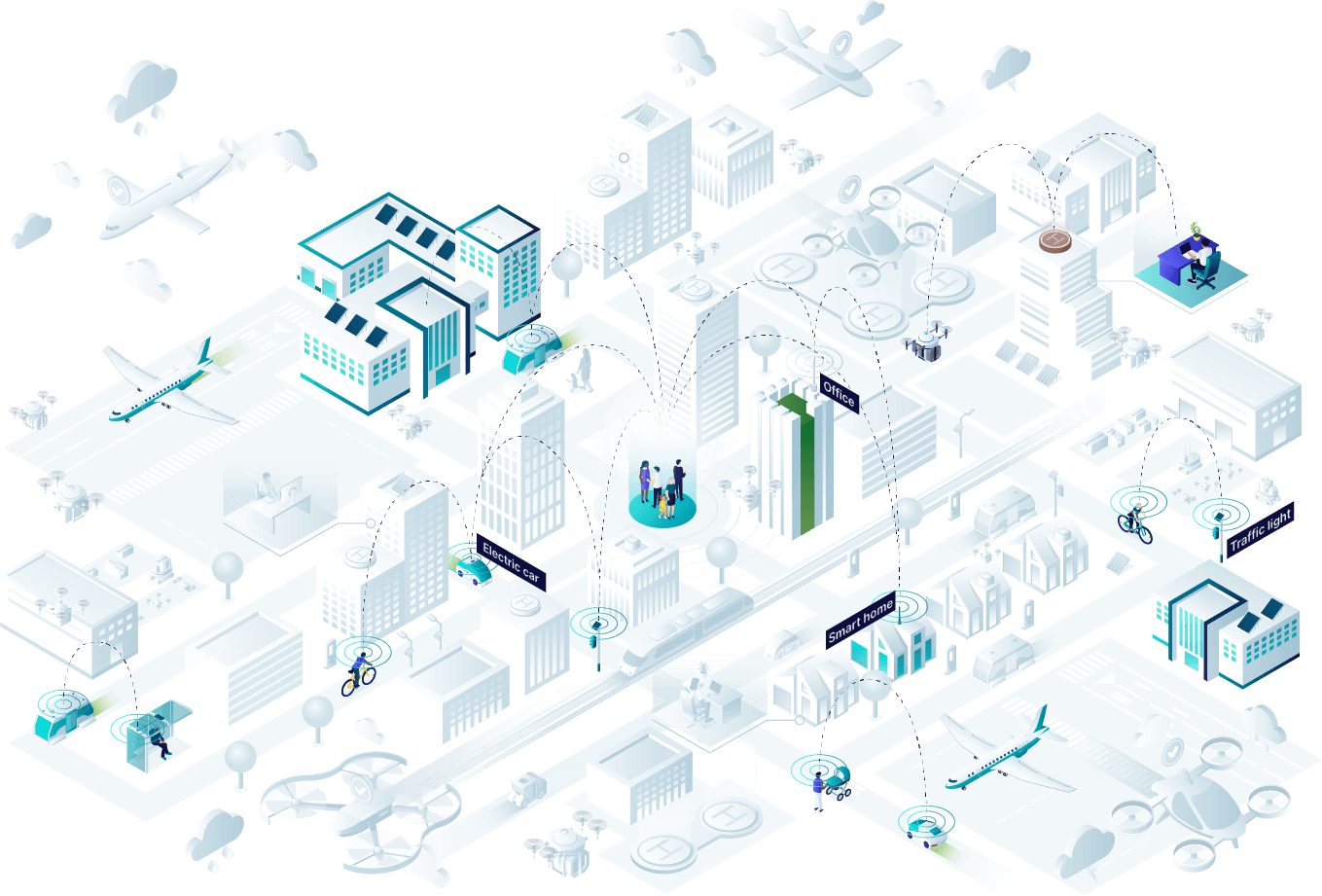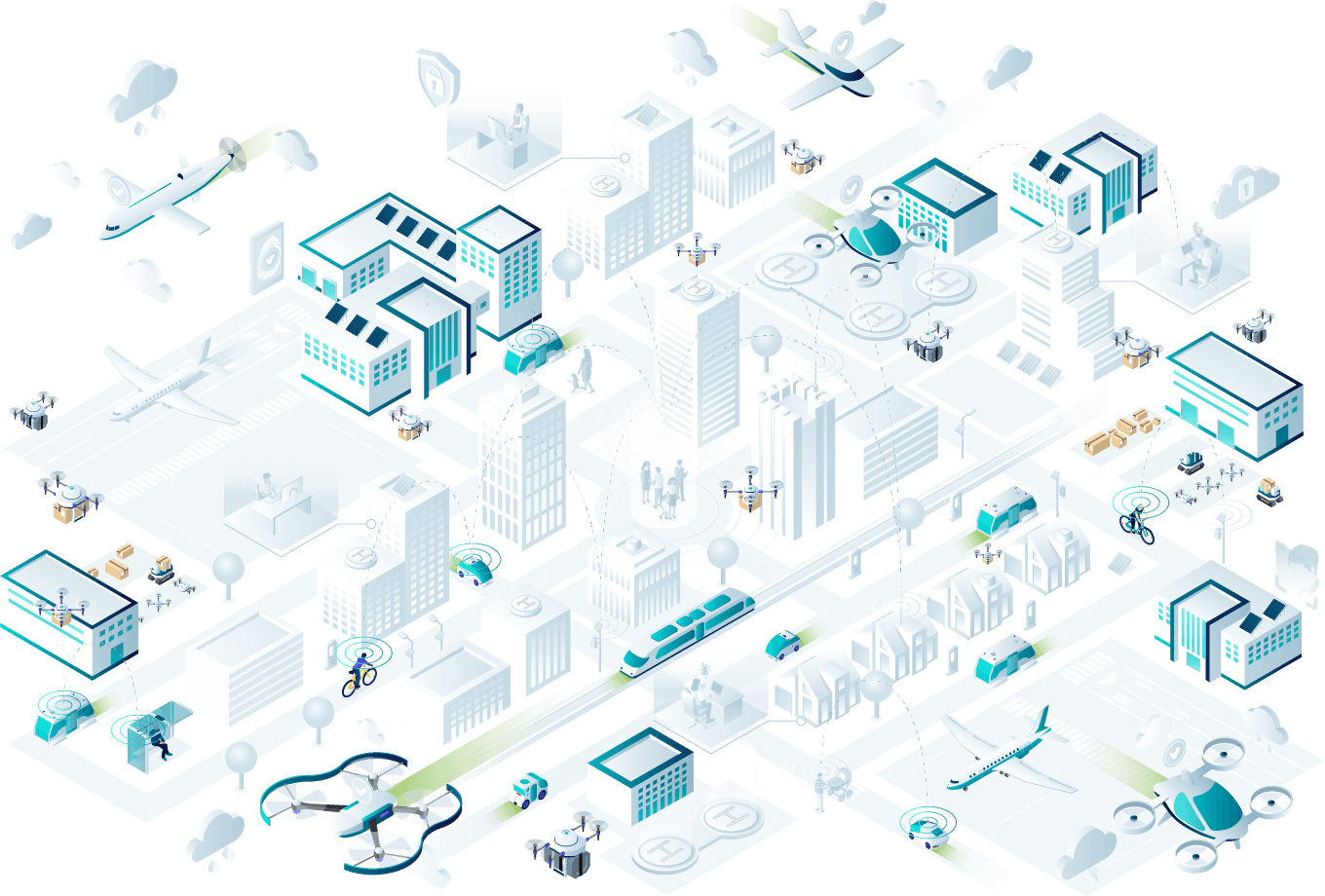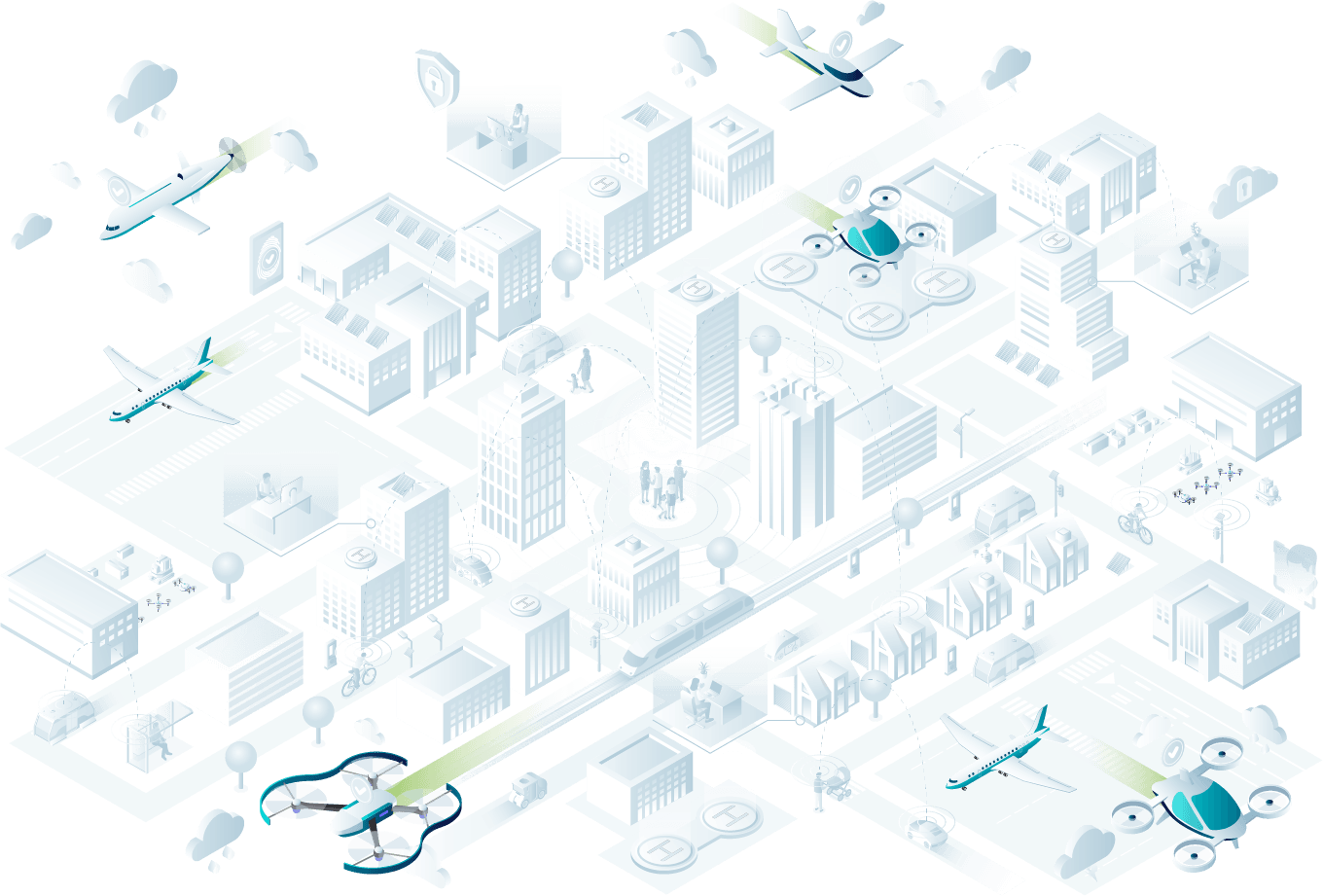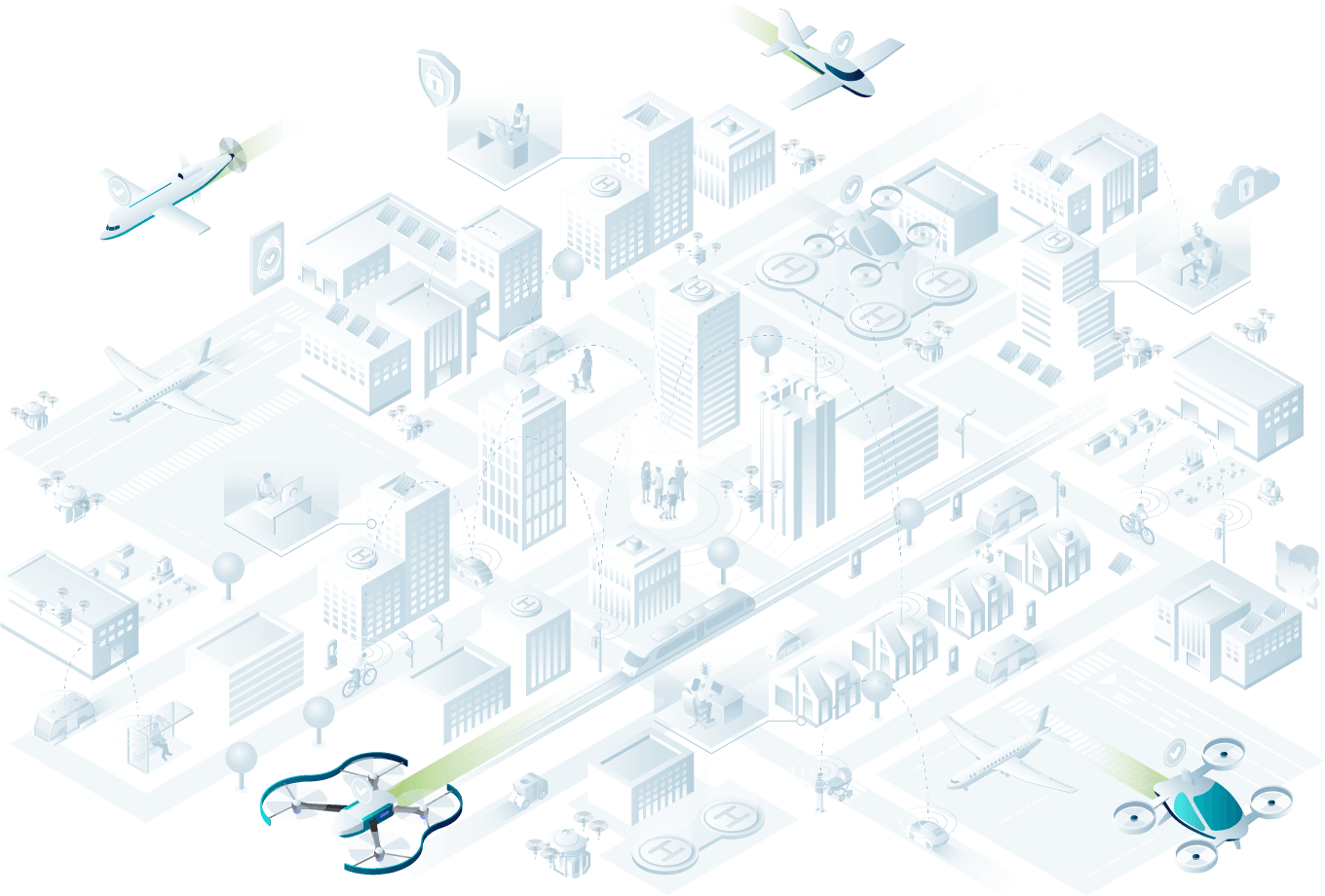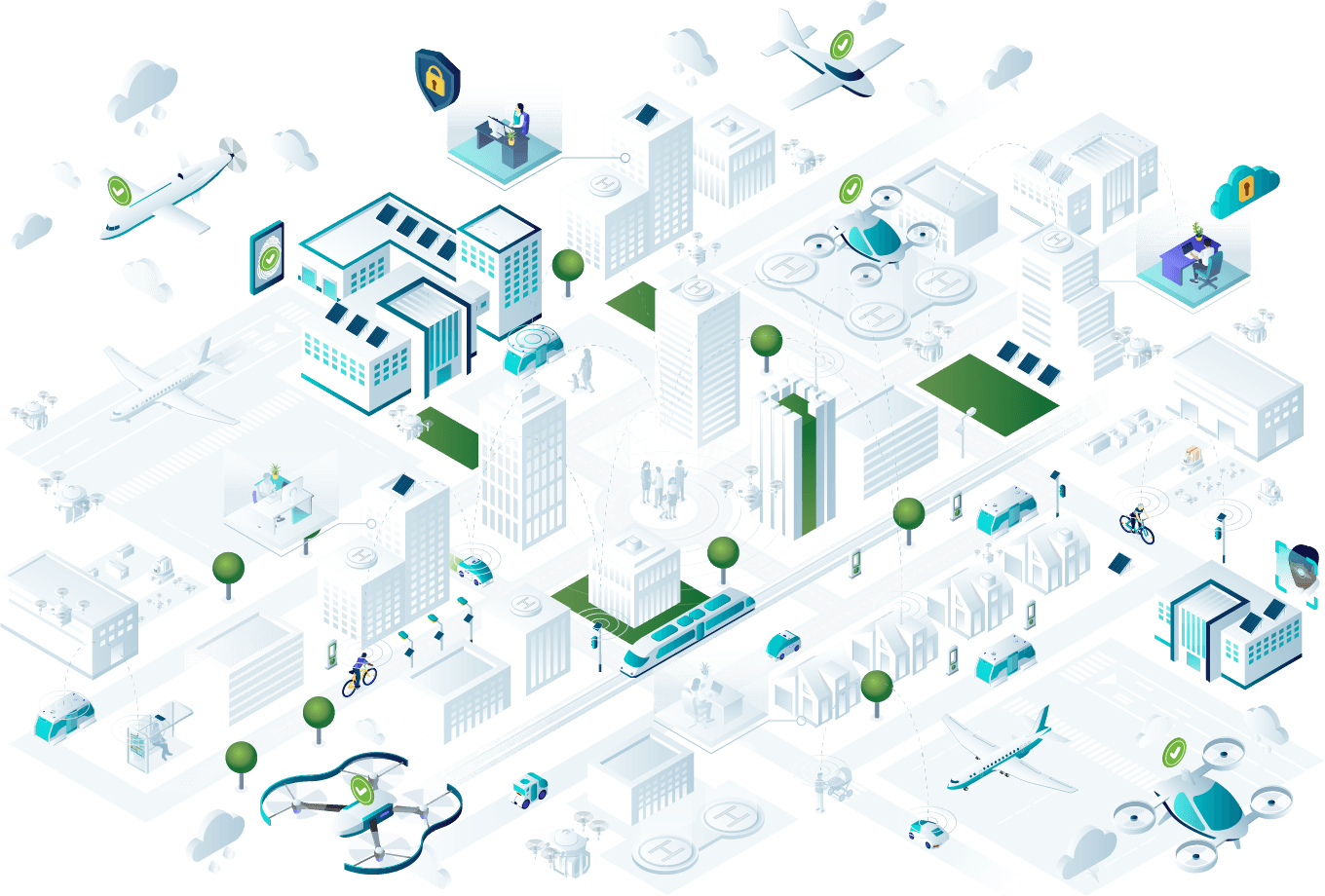Human centred & personalized services
The whole transport service is expected to be user-centric and highly personalised. Within cities, a highly connected environment (people, service, vehicles) will be fundamental to enable the shift towards an integrated multimodal transport system and smoothly run UATM operations.



